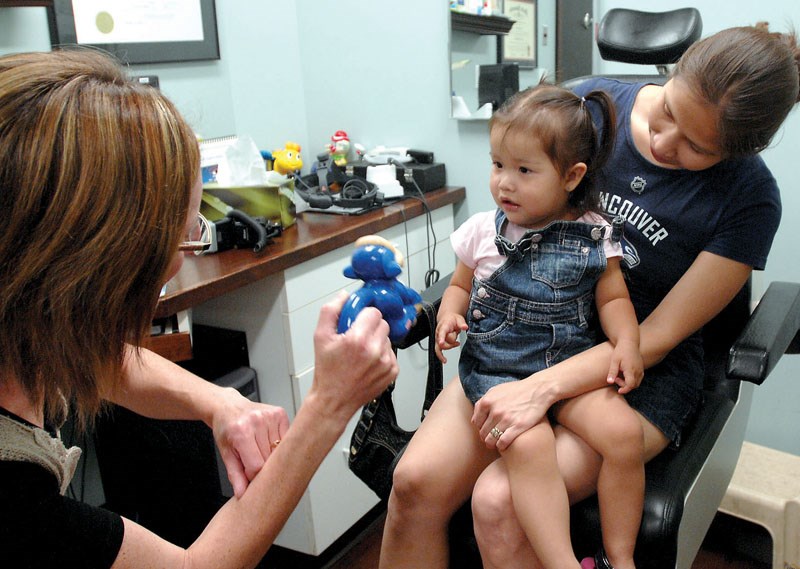A school classroom can be a valuable diagnostic tool for an optometrist.
When little Johnny can't read what's written on the smartboard, that's a cue for parents to get those eyes checked.
Now that classes are back in session, there's been a steady stream of school-aged kids coming to see Lisa Logan at her downtown Nechako Optometry office. The eyes of children change rapidly as they develop and Logan says it doesn't take long for some vision problems to show up, sometimes several years before their first day of kindergarten.
"At the end of August we see an influx of children getting prepared for the start of the school year and we're seeing a few more children maybe than normal as parents get that crossed off their list," said Logan.
"We used to encourage parents to bring their children in by three years of age, and now six months is the recommended first eye exam. A lot of parents think they shouldn't bring them in until they know the letters of the alphabet, but no. A complete eye exam can be done by three years of age and at six months we're screening for the big problems, where maybe one eye is seeing properly and the other isn't."
The first step in that case is to determine if there is one "lazy eye," the most common cause of vision problems in children. Normally, the brain will process what both eyes see, but if the images from one eye appear to the brain as sharper than the other, the brain will favour the more-focused eye and the other eye will lose its ability to see details and won't develop properly.
Lazy eyes can be fixed by having the young patient wear a patch over the dominant eye, forcing the brain to process images from the problem eye. If left untreated, the condition becomes harder to correct and perfect vision, even with corrective lenses, might no longer be possible.
"Vision is a learned process, so when you have the proper lens in front, the lens is focusing where the light should go but the brain is not recognizing a clear image," Logan explains. "So by covering up the good eye, forcing the brain to see a good image, slowly the brain will recognize and the vision is brought up to 20-20. The main thing is even if the parent thinks their child is seeing well, still bring them in for a regular eye exam."
Some eye problems in infants can be symptoms of life-threatening conditions, like retinal blastoma. Kids are sometimes scared to come in for their first visit but vision professionals like Logan go out of their way to make it a fun experience. Unless the retina at the back of a young patient's eye is under observation, there's no need for drops to dilate the pupils, which temporarily causes bluriness and sensitivity to light. If corrective lenses are needed, glasses for young infants often include a band that goes around the head to keep them from falling off.
Eye exams are covered by provincial Medical Services Plan until kids reach the age of 18. The exam is free as well to seniors 65 and older and to people under extended health care plans. The cost of an adult exam ranges from about $85 to $130.
An optometrist will test for nearsightedness, farsightedness, astigmatism, colour perception, lazy eye, crossed-eyes, eye co-ordination, depth perception, focusing ability, and will ask about the child's overall health and vision history while determining the overall health of the eyes.
"At six months we can screen for the prescription between the two eyes to make sure it's equal, [check] the health of the eye, and how the two eyes are working as a team," said Logan. "By the time they're three we're doing pretty much a complete adult exam. Even at that age, we wouldn't be asking, 'Which is better, one or two?' But we would be able to get some feedback as to what they are are seeing by using pictures to compare one eye to the other."
More information on children's eye health issues is available at www.bcdoctorsofoptometry.com.


